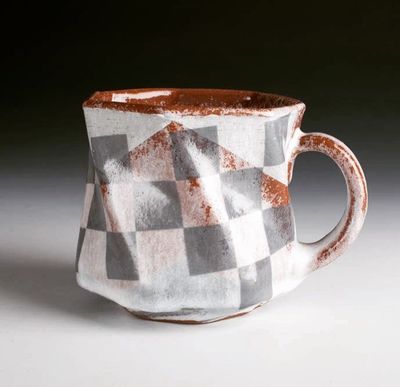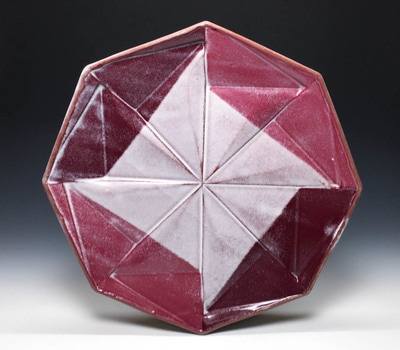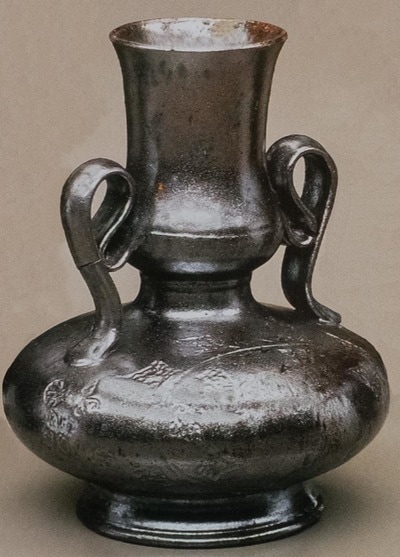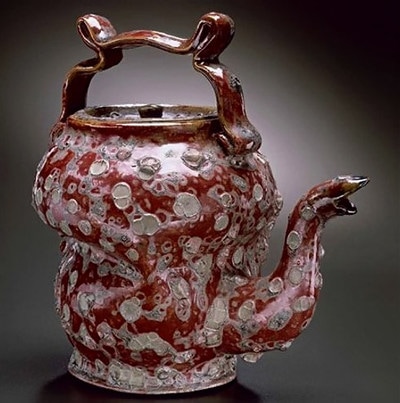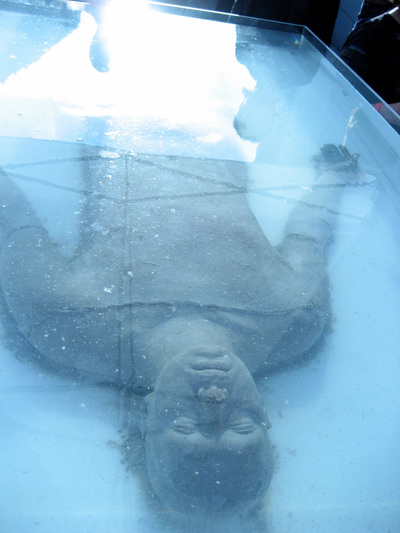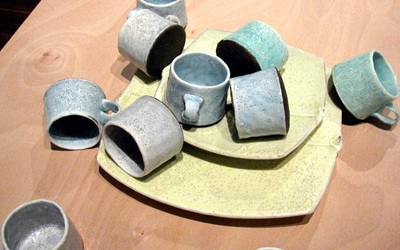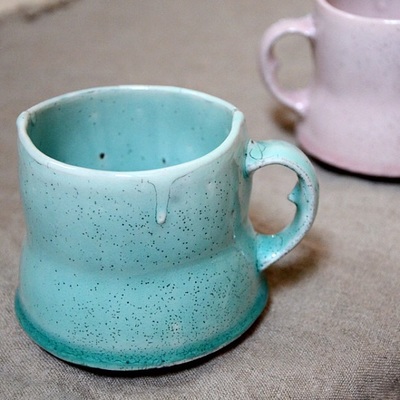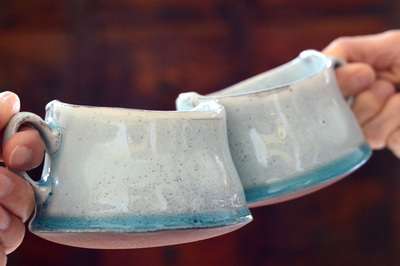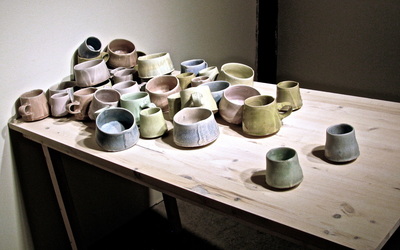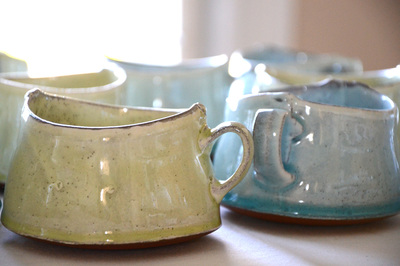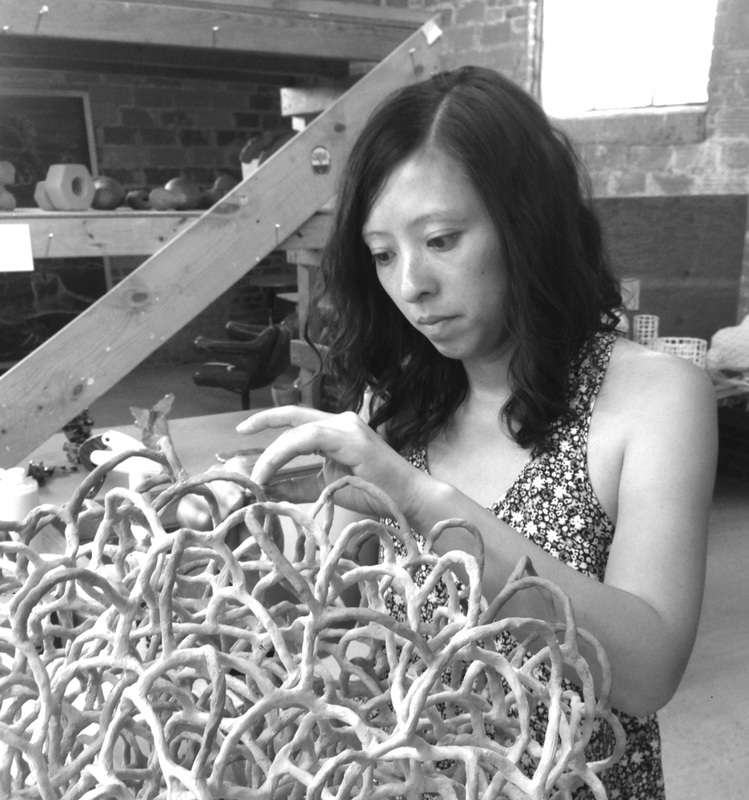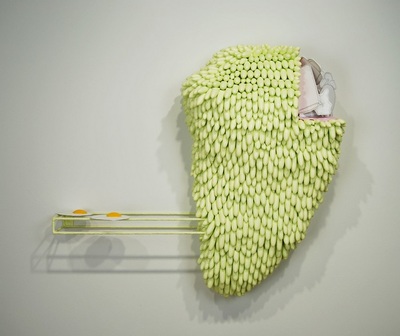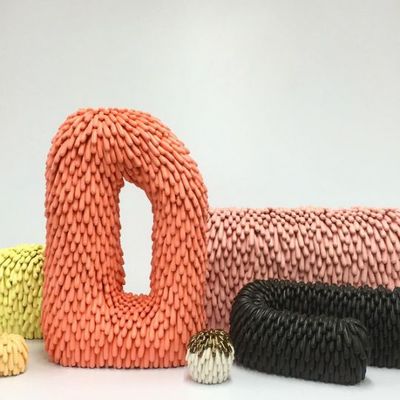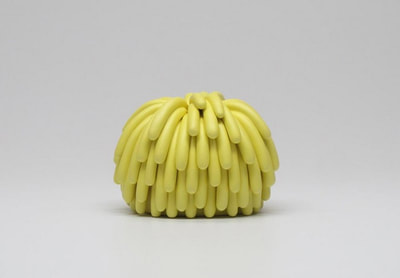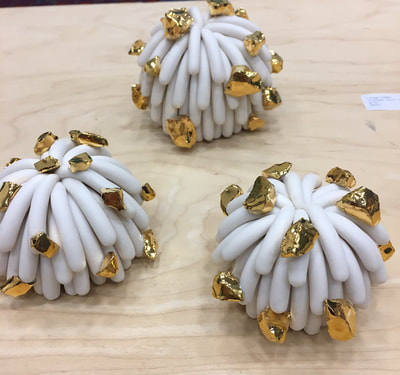Marc Digeros: Digital Influence, Analog Execution.With work that seemingly draws from both ends of the technology spectrum associated with todays ceramic studio, Marc Digeros produces work that blends old world materials with new age technology. In many ways his work shows no prescribed loyalty to tradition but rather follows a desire for exploration of material, process and the incorporation of modern digital elements. This modern aspect is not modern for the sake of being modern like one can easily find these days in stacked layers of computer guided slip trails. Marcs' work takes the precision of technology a couples it with the imperfect hand of the maker in a harmony that elevates all in unison. From my pespetive, Marcs' work is an is an ideal pairing of the digital and the analog. A complimentary performance that allows technology to sing without overshadowing the humanity of vessel making. One need only look at the chronology of Marcs' work to see the evolution that draws from the physical engineering of fabricated objects to the current processes that sample and build with technological aides that produce geometry and crispness uncommon to the human hand. Maker, material and tool in harmony is my impression of Marc Digeros and his ceramic works. Bio taken from marcdigeros.com: Marc Digeros, originally from Minneapolis, Minnesota, now resides in Los Angeles, California where he works for the architect, Frank Gehry, as model shop manager. He received his MFA from the University of Washington and his BFA from the University of Minnesota. He spent two years in Helena, MT as a resident artist at the Archie Bray Foundation and received the first ever Taunt Fellowship during his residency. He has taught at schools in the Los Angeles area including CSU (California State University) Northridge, CSU Long Beach, as well as the University of Southern California.
0 Comments
With recent posts by Cfileonline.org and others of George E. Ohr, I felt it would be a good time to add some information on our site about the Mad Potter of Biloxi. included in the small library of images as well as a brief overview of the potter taken from the Ohr-O'Keefe museum web page. George Ohr (1857-1918) the self-proclaimed “Mad Potter of Biloxi” created a body of ceramic work which defied the aesthetic conventions of 19th century America. Ohr is considered an early leader in the modernist movement and it is his creative spirit which informs the mission of the Ohr-O’Keefe Museum. His extraordinary cultural legacy is recognized for its power and integrity and for its important influence on 20th and 21st century art. Ohr’s work was rediscovered in the 1960s and is admired by artists and collectors alike. Jun Kaneko opens at Edward CellaSeptember 10 - October 29, 2016 |
|
The Blast is a set of ceramics vessels that are shaped by a shock wave induced by controlled detonation. I am using a sophisticated system of explosive charges which – on basis of measurements and tests – determine the final shape of the bowls. As a result, I am presenting a set of different sized bowls which stand on the edge of fine and applied arts. The important point is the act of creation of the bowl. The blast, event, which itself lasts no longer than the actual detonation. A shock wave shaping the bowl is spreading at a supersonic speed and partially imprints itself into the ceramic mass. It is kind of a punk analogy to an industrial porcelain production, isostatic shaping, which is also based on the use of pressure. However with much lower costs and much different result classified as free ceramics.
|
In honor of our Sponsor for the recent Vince Palacios workshop.I thought it would be a fun post to show this vintage Duncan Dealer Promo Film, circa 1975. This company has been making glazes for the hobby and professional artist for over half a century. Located just 30 miles from our location in the Central San Joaquin Valley of California.
Thanks again for your support with our endeavors to bring ceramic artists to the Central Valley of California. We appreciate all that you're doing for us.
Thanks again for your support with our endeavors to bring ceramic artists to the Central Valley of California. We appreciate all that you're doing for us.
www.arunsharmaart.com
(de)composition: man
The (de)composition series, which this piece is a part of, expresses my desire to reflect on and find beauty in the return of the physical human body to the earth upon death.
Using an unfired life-size ceramic cast of the human body, (de)composition: man is a visual representation of the gradual breakdown of the human form. This time-based kinetic sculpture creates an opportunity where one can come back at different stages of the exhibition to see the transformation of the piece. During the opening of the exhibition, the realistic life size clay figure is laid down horizontally, and then is completely immersed in a pool of water, allowing it to slowly deteriorate. Once the fog completely envelops the figure, the water is drained to reveal the partially deteriorated clay figure. As the (four month) exhibition continues, the clay figure will be exposed to the elements so water will continually be introduced (through rain) which will then dry out. As the figure breaks down more and more the clay will crack the way dry earth does, leaving some traces, or suggestions of the human form it used to have.
The (de)composition series, which this piece is a part of, expresses my desire to reflect on and find beauty in the return of the physical human body to the earth upon death.
Using an unfired life-size ceramic cast of the human body, (de)composition: man is a visual representation of the gradual breakdown of the human form. This time-based kinetic sculpture creates an opportunity where one can come back at different stages of the exhibition to see the transformation of the piece. During the opening of the exhibition, the realistic life size clay figure is laid down horizontally, and then is completely immersed in a pool of water, allowing it to slowly deteriorate. Once the fog completely envelops the figure, the water is drained to reveal the partially deteriorated clay figure. As the (four month) exhibition continues, the clay figure will be exposed to the elements so water will continually be introduced (through rain) which will then dry out. As the figure breaks down more and more the clay will crack the way dry earth does, leaving some traces, or suggestions of the human form it used to have.
Birdie Boone is a maker of tableware and a researcher of the domestic realm, especially of social tendencies and their effects on personal identity with regard to food and modern lifestyle. Birdie received her BA in Fine Arts from The College of William and Mary in Virginia in 1994 and an MFA in Artisanry/Ceramics from the University of Massachusetts, Dartmouth in 2005. Notably, she was a long-term resident artist at The Archie Bray Foundation for the Ceramic Arts in Helena, Montana, from 2007 to 2009. Birdie currently lives and maintains a full-time studio practice in rural southwestern Virginia. |
| Linda Nguyen Lopez (b. 1981) received a BFA in ceramics and BA in art education from California State University of Chico. She received a MFA in ceramics from the University of Colorado at Boulder. Lopez has exhibited her work in New Zealand and throughout the United States including Robischon Gallery, Denver; Vertigo Art Space, Denver; The Clay Studio, Philadelphia; Center for Emerging Visual Artists, Philadelphia and the Jane Hartsook Gallery at Greenwich House Pottery in New York, New York. She has been an artist in resident at The Clay Studio in Philadelphia and the Archie Bray Foundation. In 2015, Lopez was included in the Scripps Ceramics Annual curated by Julia Haft-Candel and the State of the Art exhibition at Crystal Bridges Museum of American Art. | www.lindalopez.net |



